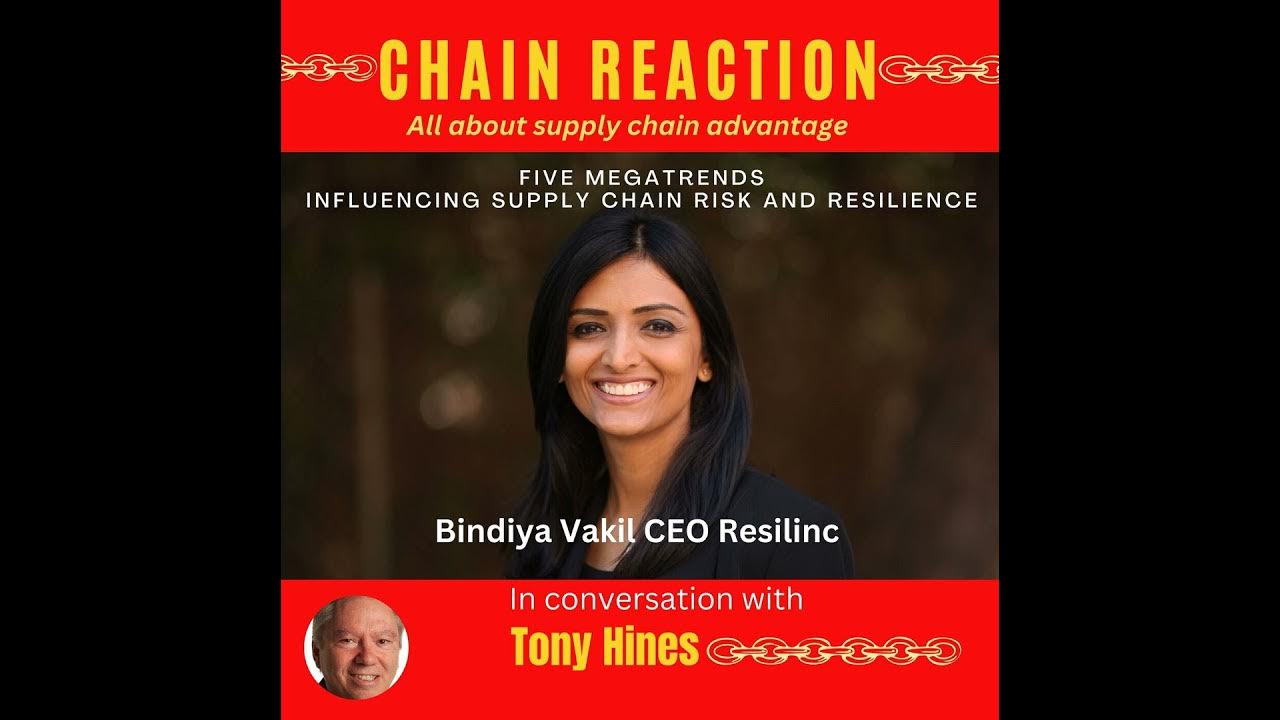Reimagining demand forecasting in the supply chain
Summary
TLDR本集《大创意与供应链》节目中,主持人Ann Robinson和Angel Mendez邀请了Flex的首席供应链与采购官Lynn Terrell,共同探讨了供应链的演变以及半导体市场的现状。Lynn分享了自己在供应链领域的丰富经验,以及在COVID-19期间如何带领团队应对挑战,强调了供应链的弹性和区域化的重要性。此外,Lynn提出了一个名为“真实需求联盟”的创新概念,旨在通过第三方数据分析,更准确地预测需求,以减少供应链中断。节目最后,Lynn表示如果成为全球供应链首席官,她将优先推动“真实需求”计划,以改善全球供应链管理。
Takeaways
- 🌐 供应链的全球化和复杂性:Flex公司作为全球供应链的一部分,展示了供应链的复杂性和全球性,涉及24亿美元的支出和全球约9000名员工。
- 🛠️ 供应链中断的挑战:提到了关税、物流中断和短缺问题,特别是对汽车行业的影响,以及EV和自动驾驶技术的发展。
- 🔄 供应链的弹性和区域化:强调了在供应链中增强弹性的重要性,并讨论了区域化趋势,这可以减少物流中断并更接近最终客户。
- 📈 供应链管理的创新:Lynn Terrell介绍了“真实需求联盟”(True Demand Coalition)的概念,这是一个旨在通过共享数据和分析来改善供应链预测和决策的新倡议。
- 💼 Lynn Terrell的领导经验:作为Flex的首席供应链和采购官,Terrell分享了他在供应链管理方面的丰富经验,包括在Avnet的20多年职业生涯。
- 🤝 合作与协作的重要性:Terrell强调了在供应链中各个利益相关者之间合作的重要性,以及如何通过共享信息和资源来提高整个行业的效率。
- 🌟 供应链的透明度和数据驱动决策:讨论了Flex公司如何利用数字化供应链提供的数据来做出更好的决策,并在供应链中实现更高的透明度。
- 🚀 供应链中断后的快速适应:COVID-19大流行期间,Flex公司如何迅速适应远程工作环境,并保持供应链的运转。
- 💡 供应链中的创新解决方案:提出了一个独立第三方的概念,该第三方可以分析行业报告和宏观经济影响,以合理化供应链并提供更好的信息。
- 🌱 供应链中的人性化管理:Terrell分享了如何通过定期的团队会议和个人关怀来加强团队的凝聚力和支持。
- 🔮 供应链的未来展望:讨论了供应链管理的未来趋势,包括如何通过技术创新和更好的预测来减少未来的供应链中断。
Q & A
Lynn Terrell在Flex公司担任什么职位?
-Lynn Terrell是Flex公司的首席供应链和采购官。
Lynn在加入Flex之前在哪家公司工作,并且担任什么职位?
-Lynn在加入Flex之前在Avnet公司工作,担任的最后一职位是Avnet United和Velocity的总裁,负责全球业务单元,包括一级EMS和OEM客户、供应商战略以及创新供应链项目。
Lynn在Flex的主要职责有哪些?
-Lynn在Flex的职责包括直接和间接采购、货运与物流、库存管理、战略供应链解决方案开发以及与客户的供应链项目。
Flex公司的供应链规模有多大?
-Flex公司的供应链规模约为240亿美元,拥有约9000名员工,并且管理着大约一千家客户的供应链。
Lynn如何描述当前的供应链状态?
-Lynn认为当前供应链状态复杂,存在战术问题如关税、物流中断或短缺,以及需要增强供应链的弹性和区域化的趋势。
Lynn认为如何提高供应链的弹性?
-Lynn认为通过与客户紧密合作,了解他们的业务目标,并共同推动供应链的弹性是关键。这包括从材料清单开始,考虑潜在的挑战,以及制定合适的制造战略。
Lynn在COVID-19疫情期间学到了哪些领导经验?
-Lynn学到了在远程环境中快速适应、团队合作、果断决策以及关心团队成员的个人和专业挑战的重要性。
Lynn如何描述True Demand Coalition的构想?
-True Demand Coalition是一个独立的第三方构想,旨在通过分析行业报告和宏观经济影响来合理化供应链,提供更好的信息,帮助OEM、EMS、分销商和供应商做出更好的决策。
True Demand Coalition目前有多少成员公司参与?
-True Demand Coalition目前有25家成员公司参与。
如果Lynn是世界供应链官,她会优先考虑什么来改变世界供应链?
-Lynn会优先考虑True Demand的理念,因为它不仅适用于电子行业,还可以应用于任何行业,帮助更好地预测需求,匹配供需,有效管理复杂的供应链。
Outlines

このセクションは有料ユーザー限定です。 アクセスするには、アップグレードをお願いします。
今すぐアップグレードMindmap

このセクションは有料ユーザー限定です。 アクセスするには、アップグレードをお願いします。
今すぐアップグレードKeywords

このセクションは有料ユーザー限定です。 アクセスするには、アップグレードをお願いします。
今すぐアップグレードHighlights

このセクションは有料ユーザー限定です。 アクセスするには、アップグレードをお願いします。
今すぐアップグレードTranscripts

このセクションは有料ユーザー限定です。 アクセスするには、アップグレードをお願いします。
今すぐアップグレード関連動画をさらに表示

Sustainable Procurement in Every Purchasing Decision - Kloopify

The Magic Conveyor Belt: Supply Chains, A.I., and the Future of Work

Five Megatrends Influencing Supply Chain Risk And Resilience with Bindiya Vakil

Circular Economy through Supply Chain Innovation - Sustainn

From Automated to Autonomous Supply Chains

AI-Driven Supply Chains: 3 Cases | MIT SCALE Webinar | Spanish
5.0 / 5 (0 votes)
